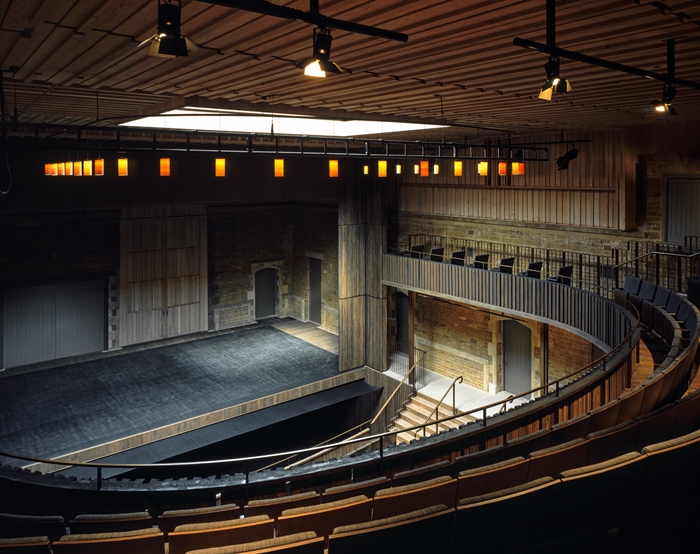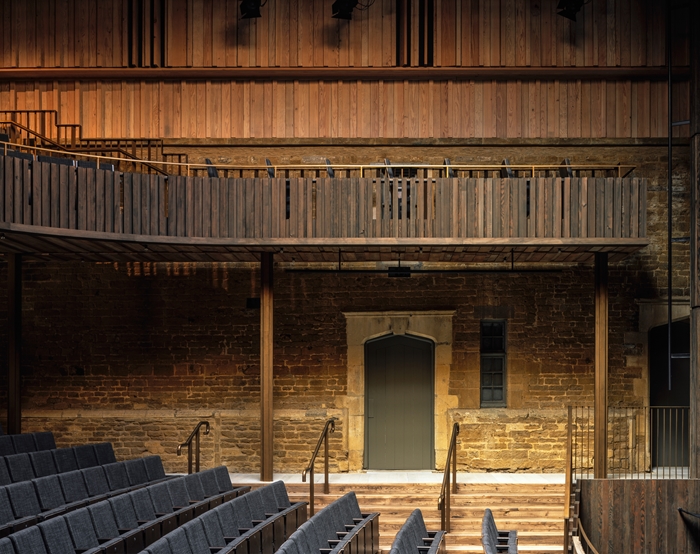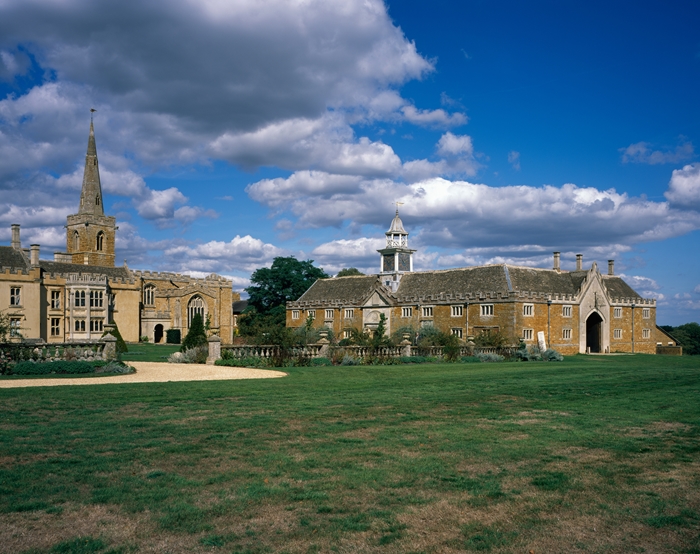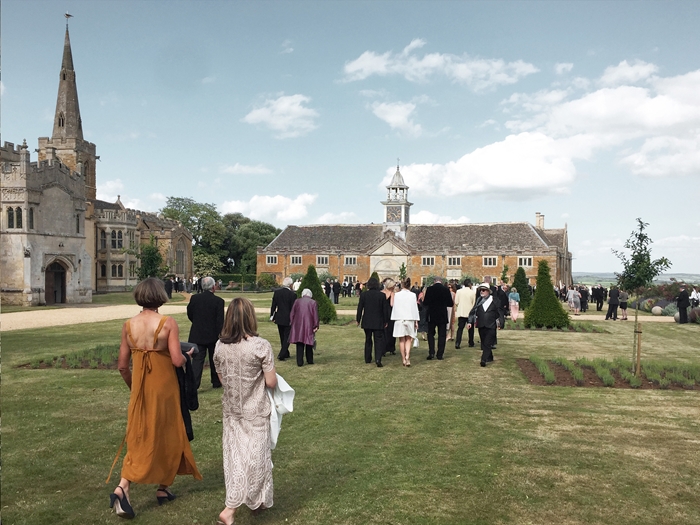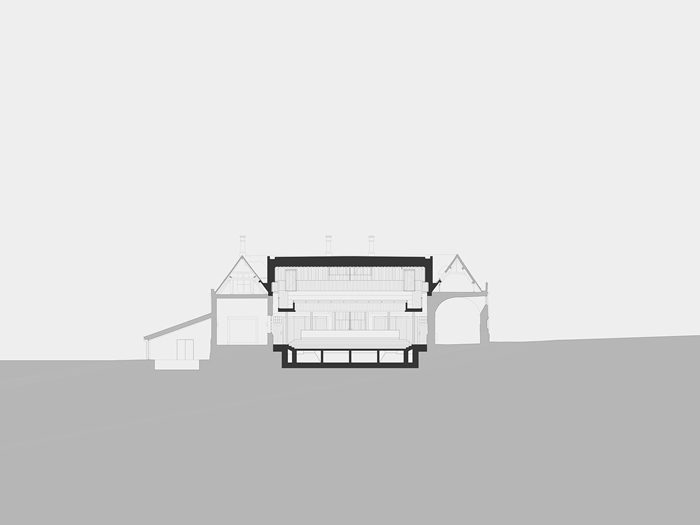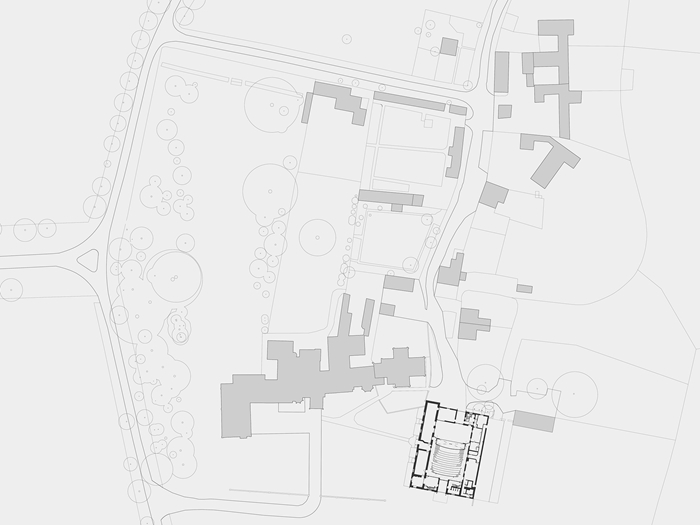Nevill Holt Opera
by Witherford Watson Mann Architects
Client Nevill Holt Opera
Awards RIBA East Midlands Award 2019, RIBA East Midlands Conservation Award 2019, RIBA East Midlands Building of the Year 2019 and RIBA National Award 2019
This project was shortlisted for the RIBA Stirling Prize 2019

Nevill Holt Opera Building is, at first interaction, a non-building, wholly hidden within the stable yard of the hall’s stable block.
Following on from a forensic analysis of the history of the site the architects have approached the brief by firstly focusing on the idea of a room in stone which then has a cut in the ground that forms the stalls and orchestra pit. A series of further moves insert the seating, roof and rooflight. This creates a clear hierarchy to what is a quiet architecture, a crafted box that allows the performer to be centre stage and the proportions and inner wall of the stable block to be respected.
There is no formal foyer to this opera, the walled gardens perform this role and from the first threshold there are no details here that are ill considered. Full height hand crafted doors bring you straight into the auditorium. The perimeter is exquisite board marked concrete, held away from the stable block walls by a compacted hoggin edge. In this same perimeter zone elegant bronze coloured cruciform columns support the dress circle above.
The stage, the heart of the space, has an intimate feel, as if the performer is in the audience with a generous rooflight located above.
A darker stained wood is used to form rotating proscenium screens, the dress circle balustrade, the seating and the floor. This is a neat, visually recessive palette that allows the walls of the existing stables to be clearly, but quietly, reinforced.
The dress circle is reached via an elegantly detailed stair that has been inserted into the existing stable block and once you reach the dress circle, which is also held away from the stable walls, the palette is again very controlled and all seats have great views to the stage. There are some very nice touches here: inflecting the handrail to acknowledge an existing stable window and the scalloping of the rear of the dress circle to acknowledge the front door being two of many.
The new roof and upper walls of the auditorium are all from a lightly sand blasted larch, picking up the more honey coloured hues of the local Clipsham stone. The rhythm of the cladding pattern is informed by the rhythm of the existing stable joists behind. This cladding is also part of a larger acoustic tuning exercise to support young opera singers' voices. The cladding interface with the existing stone walls has been carefully considered. A new Colleyweston slate ’dry pack’ zone that supports a new ironstone parapet, where the old eaves line previously existed, is a good example of how the architect's approach to conservation is very measured; sometimes playing up the differences and sometimes recognising a much quieter approach is needed.
This is a project that looks effortless, yet we all know that this belies the truth. The modesty, craftsmanship, care and attention that have been applied here are exceptional. Country houses continually evolve, being added to over time; the opera building is an exceptional 21st Century addition to Nevill Holt Hall.
Contractor company name Messenger
Structural Engineers Price Myers
Environmental / M&E Engineers Max Fordham
Quantity Surveyor /Cost Consultant Gleeds
Fire consultant The Fire Surgery
Historic Architecture Consultant Julian Harrap Architects
Planning Consultant Rural Solutions
Theatre planning and acoustics Sound Space Vision
Internal area 816 m²
